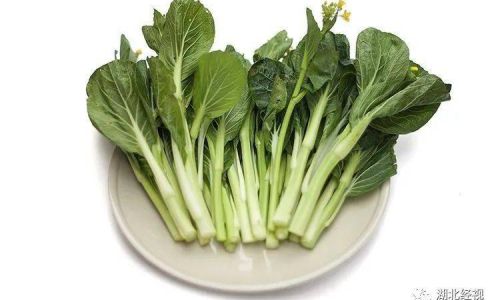Table of content
Leafy greens, such as spinach, kale, arugula, and lettuce, are nutritional powerhouses packed with vitamins, minerals, and fiber. However, their delicate nature makes them prone to wilting, spoilage, and loss of crispness within days of purchase. Proper storage techniques are essential to extend their shelf life, reduce food waste, and ensure you enjoy their vibrant flavors and health benefits. This article explores science-backed strategies, practical tips, and innovative solutions to keep leafy greens fresh for longer periods.
Understanding the Enemies of Freshness
Before diving into preservation methods, it’s crucial to identify the factors that cause leafy greens to deteriorate:
- Moisture: Excess humidity accelerates bacterial growth and rotting.
- Ethylene Gas: Some fruits and vegetables release this gas, which speeds up aging in sensitive produce.
- Oxidation: Exposure to air leads to browning and loss of texture.
- Improper Temperature: Fluctuations or incorrect refrigeration settings can damage cell structures.
By addressing these issues, you can create an optimal environment for your greens.

Smart Shopping: Selecting the Freshest Produce
The journey to long-lasting greens begins at the grocery store or farmers’ market.
- Inspect Leaves: Choose crisp, vibrant greens with no yellowing, wilting, or slimy spots.
- Avoid Pre-Cut Bags: While convenient, pre-washed and chopped greens often have shorter lifespans due to moisture buildup.
- Buy Whole Heads: Intact heads of lettuce or cabbage tend to stay fresh longer than loose leaves.
Pre-Storage Preparation: The First Line of Defense
Proper preparation before storage is non-negotiable.
Washing and Drying
- Rinse Gently: Use cold water to remove dirt and pesticides. Avoid soap, as it can leave residues.
- Vinegar Soak (Optional): A 10-minute dip in a solution of 1 part vinegar to 3 parts water kills bacteria and extends freshness. Rinse thoroughly afterward.
- Dry Thoroughly: Moisture is public enemy #1. Use a salad spinner to remove excess water, then pat leaves dry with a clean kitchen towel or paper towels.
Removing Damaged Leaves
Discard any bruised, slimy, or discolored leaves to prevent spoilage from spreading.
Storage Solutions: Containers, Bags, and Beyond
The right storage method depends on the type of green and your kitchen setup.
Refrigerator Crisper Drawers
Most modern fridges have humidity-controlled drawers.
- High Humidity for Delicate Greens: Spinach, arugula, and herbs thrive in high-humidity environments (close the vent).
- Low Humidity for Heartier Greens: Kale, collard greens, and Swiss chard benefit from lower humidity (open the vent slightly).
Airtight Containers with Paper Towels
- Line a plastic or glass container with paper towels to absorb excess moisture.
- Add greens in a single layer, then cover with another paper towel before sealing.
- This method works well for chopped greens or mixed salads.
Perforated Plastic Bags
- Poke holes in a plastic produce bag to allow airflow.
- Add greens, twist the top to seal, and store in the crisper.
- Avoid overcrowding to prevent bruising.
Standing in Water (For Hearty Greens)
- Trim the ends of kale, chard, or celery.
- Place stems in a jar with an inch of water, cover loosely with a plastic bag, and refrigerate.
- Change the water every two days.
Advanced Techniques: Freezing and Preserving
For long-term storage, consider these methods:

Blanching and Freezing
- Blanch greens in boiling water for 2–3 minutes, then shock in ice water.
- Drain thoroughly, pat dry, and pack into freezer-safe bags.
- Frozen greens last 8–12 months and are perfect for smoothies or soups.
Dehydrating
- Use a dehydrator or oven on the lowest setting to remove moisture.
- Store dried greens in airtight jars for up to a year. Rehydrate before use.
DIY Hacks and Eco-Friendly Alternatives
Reusable Produce Bags
Swap plastic bags for breathable mesh or cotton bags. They reduce waste and maintain airflow.
Aluminum Foil
Wrap herbs like cilantro or parsley in damp paper towels, then in foil. Store in the fridge for up to two weeks.
Beeswax Wraps
These reusable, antimicrobial wraps are ideal for covering greens or wrapping herb bundles.
Avoiding Common Pitfalls
Ethylene Gas
Keep greens away from ethylene-producing fruits like apples, bananas, and avocados.
Overcrowding
Leave space between greens to prevent bruising and allow air circulation.
Delaying Storage
Refrigerate greens as soon as possible after purchase. Leaving them at room temperature accelerates decay.

Reviving Wilted Greens
Don’t toss slightly wilted greens—they can often be revived:
- Ice Bath: Soak leaves in cold water with ice cubes for 15–20 minutes.
- Steam Blanch: For tougher greens like kale, a quick steam can restore crispness.
Organizing Your Fridge for Maximum Efficiency
- Label Containers: Note the storage date to track freshness.
- Rotate Stock: Use the “first in, first out” rule to minimize waste.
- Humidity Gauges: Invest in a small fridge thermometer to monitor temperature and humidity.
Travel-Friendly Tips for On-the-Go Greens
- Portable Coolers: Use insulated bags with ice packs for picnics or road trips.
- Pre-Washed Greens: Pack dry leaves in airtight containers to avoid sogginess.
The Role of Organic vs. Conventional Produce
Organic greens may spoil slightly faster due to the absence of synthetic preservatives. Adjust storage times accordingly.
Conclusion: Enjoy Fresh Greens Daily
Preserving leafy greens requires a blend of science and practicality. By understanding their vulnerabilities and implementing tailored storage strategies, you can enjoy crisp, nutrient-rich greens for weeks. Experiment with these methods to find what works best for your lifestyle, and remember—a little preparation goes a long way in reducing food waste and saving money.
Whether you’re a meal-prep enthusiast, a zero-waste advocate, or simply someone who loves a crisp salad, these techniques will transform how you interact with one of nature’s most delicate yet rewarding foods. Happy storing!






0 comments